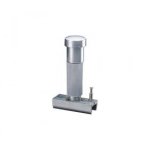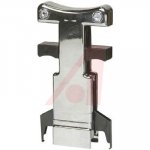Juleshsmith
Experienced Member
Hi VCFED world.
My beloved CBM 8032 died last week As is often the case, I proudly showed her off to dinner guests last Saturday night, hit the power button... NOTHING!!!, not even the cheerful welcoming 'chirp'. I was guttered, as were my guests. She was last turned on and working approx 2 weeks ago. No signs of illness then. Hasn't been moved.
She was last sick in 2012 and the wonderful people on VCFED guided me through her recovery.
I was thinking this time I'd take it to a pro, but alas we don't really have anyone near where I live who repairs vintage computers.
I have an elementary knowledge of electronics, so need a lot of hand holding (as you would have noticed from my last post)
Here's what I know:
1) No chirp on start up, no video display, but there is a faint glow coming from the back of the CRT.
2) The PSU shows the following; Pins 9 and 11= 22.4VAC (S/B 21VAC), Pins 4 and 6 = 18.6VAC (S/B 22VAC), Pins 7 and 8 + 16.8VAC (S/B 18VAC)- Are these acceptable voltages?
3) Power is getting to the data cassette (runs when you hit play, fast fwd etc)
4) No obvious 'hot' chips. No obvious damage or dry joints although I only had a quick scan but could look more closely if I knew which chips to look at.
5) There are previous blogs I've read about dead 8032s, but a bit above my skill set... http://www.vcfed.org/forum/archive/i...p/t-40896.html
I have a second non working 8032 which I can use for parts
In simple terms, where do I start? I don't have a suitable meter to test caps but I could purchase one if that would be a good start?
Which chips are possibly the suspects? Could you also give me their location (E.G. UA9 etc)
Many many thx guys. And so the journey begins...
My beloved CBM 8032 died last week As is often the case, I proudly showed her off to dinner guests last Saturday night, hit the power button... NOTHING!!!, not even the cheerful welcoming 'chirp'. I was guttered, as were my guests. She was last turned on and working approx 2 weeks ago. No signs of illness then. Hasn't been moved.
She was last sick in 2012 and the wonderful people on VCFED guided me through her recovery.
I was thinking this time I'd take it to a pro, but alas we don't really have anyone near where I live who repairs vintage computers.
I have an elementary knowledge of electronics, so need a lot of hand holding (as you would have noticed from my last post)
Here's what I know:
1) No chirp on start up, no video display, but there is a faint glow coming from the back of the CRT.
2) The PSU shows the following; Pins 9 and 11= 22.4VAC (S/B 21VAC), Pins 4 and 6 = 18.6VAC (S/B 22VAC), Pins 7 and 8 + 16.8VAC (S/B 18VAC)- Are these acceptable voltages?
3) Power is getting to the data cassette (runs when you hit play, fast fwd etc)
4) No obvious 'hot' chips. No obvious damage or dry joints although I only had a quick scan but could look more closely if I knew which chips to look at.
5) There are previous blogs I've read about dead 8032s, but a bit above my skill set... http://www.vcfed.org/forum/archive/i...p/t-40896.html
I have a second non working 8032 which I can use for parts
In simple terms, where do I start? I don't have a suitable meter to test caps but I could purchase one if that would be a good start?
Which chips are possibly the suspects? Could you also give me their location (E.G. UA9 etc)
Many many thx guys. And so the journey begins...


